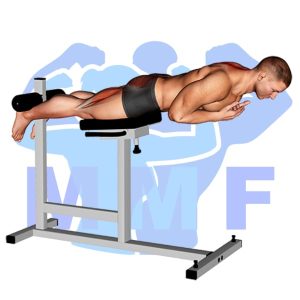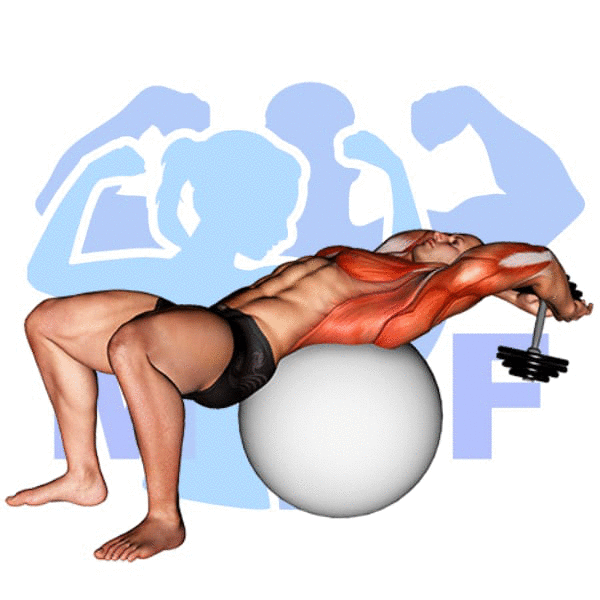Are you struggling with hanging knee ups during your ab workout? Does your form constantly fall apart, leaving you feeling frustrated and defeated? If so, you’re not alone. Many people struggle with executing this exercise correctly because of a weak core or lack of proper technique. Don’t worry, though, there’s no need to give up on this effective movement just yet! In this post, we’ll go over the most common mistakes made while performing hanging knee ups, and provide you with the solutions you need to take your ab workout to the next level.
Hanging Knee Up Summary
- Primary Muscles: Iliopsoas (Psoas Major & Iliacus)
- Secondary Muscles: Adductor Brevis, Adductor Longus, Pectineus, Sartorius, and Tensor Fasciae Latae
- Equipment: Pull Up Bar
- Mechanics Type: Isolated
- Force: Pull
- Utility: Auxiliary

Hanging Knee Up Instructions
- You should begin by finding a pull-up bar where you can hang completely straight without your feet touching the ground and a safe way to reach the bar and get down.
- Once you hang, pull your legs up with your abs as high as possible.
- Lower your legs back to the hanging position.
- Do the Hanging Knee Up for 8-10 reps.
Video Tutorial
Hanging Knee Up Muscles
Target (Agonist)
- Iliopsoas (Psoas Major & Iliacus)
Synergists
- Adductor Brevis
- Adductor Longus
- Pectineus
- Sartorius
- Tensor Fasciae Latae
Dynamic Stabilizers
- Rectus Femoris
Stabilizers
- Deltoid – Posterior
- Latissimus Dorsi
- Pectineus
- Pectoralis Major – Sternal
- Rectus Femoris
- Sartorius
- Tensor Fasciae Latae
- Teres Major
- Triceps – Long Head
Antagonist Stabilizers
- None

Benefits of Hanging Knee Up
The hanging knee up exercise is a great way to strengthen the iliopsoas muscles, which are a combination of the psoas major and iliacus. This exercise works to target the iliopsoas muscles specifically, which can help to improve overall core strength, hip flexion, and stability. Additionally, the hanging knee up exercise helps to promote proper posture and form by engaging the lower back and abdominal muscles. This exercise can be beneficial for people who have tight hip flexors or weak core muscles, as it can help to improve flexibility and reduce risk of injury.
Tips for Performing Hanging Knee Up
If you’re seeking to take the hanging knee up to a new level, then you’re at the right place. Using these tips will enable you to take full advantage of this effective workout. Concurrently with strengthening your core muscles, increasing movability, and even a reduced possibility of injury can all be accomplished with this exercise. Let’s get started and explore how these suggestions will help you.
- Make sure you have a sturdy bar to hang from: When doing Hanging Knee Ups, make sure to use a secure bar or beam to hang from. This will ensure you don’t slip off and avoid any accidents.
- Get the form right: Before you start, make sure you know the proper form for the exercise to ensure that you are getting the most out of it. This will help you get better results and keep you safe.
- Take your time: Don’t rush this exercise and take your time when doing it. This will help you keep your balance and get the most out of the exercise. It will also help prevent any potential injuries.
Benefits and Tips Video
Frequent Mistakes To Avoid
When conducting hanging knee up, avoiding common mistakes can be the difference to achieving optimal results and preventing pain. Also, in order to maximize your benefits of the exercise, appropriate form is critical. Through preventing these frequent errors, you can raise your ability to achieve your desired results. But relax, it’s not as challenging as it might appear. By knowing the errors to avert and taking the right actions, you can execute the activity safely and successfully. Thus, it is now your turn to optimize the impact of this exercise and enjoy the benefits of a productive workout.
- Not engaging the core: Many people make the mistake of not engaging their core muscles when doing hanging knee ups. This can lead to poor form, injury, and not getting the most out of the exercise.
- Doing too many reps too quickly: People often rush through the exercise and do too many reps too quickly. This can lead to fatigue and exhaustion, which can cause poor form and even injury.
- Not using a spotter: Many people try to do this exercise without a spotter, which can be dangerous. Having a spotter to help guide you and make sure you are performing the exercise correctly is essential for safety and effectiveness.
Find More Bodyweight Exercises Here
Variations and Complementary Exercises
If you’re looking to switch up your routine or add in some variations to your Hanging Knee Up exercise, try these alternative exercises below. All of these exercises work similar muscles as the Hanging Knee Up and will help you strengthen your core and improve your overall fitness.
Hanging Pike

Hanging Pike is a great complementary or alternative exercise to Hanging Knee Up. It helps to further strengthen the core and upper body while also stretching and elongating the abdominals. To perform this exercise, you begin by hanging from an overhead bar with your arms extended in front of you and your legs straight. From there, you slowly lift your legs until they are parallel to the ground, before lowering them back to the starting position. This exercise is great for activating all the muscles of your core and upper body while still providing a great stretch to the abdominals. It is also a great way to increase your grip strength.
Hollow Hold

Hollow Hold is an effective complementary or alternative exercise for Hanging Knee Up. It works the core muscles in a different way, focusing on the rectus abdominis, obliques, and transverse abdominis. This exercise can be done either on the floor or hanging from a pull-up bar. To do the Hollow Hold, start by lying down on your back and lifting your legs off the ground. Lift your upper body and arms off the ground and keep them in a straight line. Squeeze your abs and glutes and hold this position for 10 to 30 seconds. This exercise is great for strengthening your core and improving your overall posture.
Reverse Sit Up

Reverse sit ups can be a great complementary or alternative exercise to the hanging knee up. This exercise is performed by lying on the floor with your hands behind your head and your legs out in front of you. You then lift your upper body off the ground and reach your arms towards your feet, before returning to the starting position. This exercise targets the core muscles and the lower back, making it a great way to strengthen these areas. Reverse sit ups are also a great option for those who may not have the strength or balance to perform a hanging knee up.
Check Out These Top Bodyweight Exercises
Tuck Crunch

Tuck Crunch is a great alternative or complementary exercise to Hanging Knee Up. It is an abdominal exercise that involves lying flat on your back with your knees bent, feet flat on the floor, and arms crossed over your chest. You then tuck your chin and lift your torso off the ground, crunching your upper abdominals. This exercise works the same muscles as Hanging Knee Up, but in a different way, as it focuses on a more isolated crunching motion. It is a great exercise to add to your ab routine and can be done without any equipment, making it a convenient and effective addition to any workout.
Superman Plank

Superman Plank is an excellent complementary exercise to the Hanging Knee Up. It is an isometric exercise that targets the same muscles as the Hanging Knee Up while also engaging the core. This exercise helps to build strength and stability in the core, shoulders, and glutes. When done correctly, Superman Plank can be a great alternative to the Hanging Knee Up for those who may find the latter too difficult or uncomfortable. Additionally, Superman Plank requires no equipment, making it accessible to anyone with a bit of floor space.
Sit Up

Sit Up is a complementary exercise to the Hanging Knee Up, as it focuses on strengthening the core muscles. Unlike the Hanging Knee Up, which is mostly focused on the abdominal muscles, Sit Up also works the hip flexors, lower back, and obliques. This makes it a great alternative exercise for those who want to target multiple muscle groups at once. Furthermore, the Sit Up allows for greater range of motion than the Hanging Knee Up, which can help increase flexibility and balance.
Find More Legs Exercises Here
Opposing Complementary Exercises
To ensure you are targeting all the necessary muscles, it is important to use exercises that complement the Hanging Knee Up. This will help to strengthen opposing muscles and prevent imbalances in your body. Below are a few exercises that will help you do just that.
Hyperextension

Hyperextension is a great complementary exercise to the Hanging Knee Up. It is an exercise that focuses on strengthening the lower back and abdominal muscles and can be done with a hyperextension bench, or even on the floor. By performing the Hyperextension exercise, you are working the opposing muscle group to the Hanging Knee Up, which targets the rectus abdominis and hip flexors. This combination of exercises is beneficial for helping to strengthen and tone the core muscles. Additionally, it helps to improve overall posture and balance, as well as improving flexibility.
Bench Hyperextension

Bench Hyperextension is a great exercise to complement the Hanging Knee Up as it works the opposing muscle group. It primarily targets the lower back muscles, working to strengthen and tone them. This exercise is performed by lying face down on a hyperextension bench, with your feet secured on the footplate, and your hands clasped behind your head. As you lift your torso up off the bench, you will be engaging your lower back muscles, and then return to the starting position. This exercise helps to strengthen and tone your lower back muscles, which are key for a strong core and good posture. Completing this exercise regularly in conjunction with Hanging Knee Up helps to create a balanced workout routine that will help you achieve your fitness goals.
Plate Hyperextension

Plate Hyperextension is an excellent complementary exercise to the Hanging Knee Up as it works the opposing muscle group. This exercise targets the lower back and glutes, while the Hanging Knee Up focuses on the abdominal muscles. Plate Hyperextension is performed by lying face down on a hyperextension bench, with a weight plate held in both hands. The feet are secured to the bench, and the body is raised until the hips are slightly higher than the shoulders. This exercise should be done slowly and with control, focusing on squeezing the lower back and glutes at the top of the movement. Plate Hyperextension can help build strength in the lower back and glutes, which can help improve overall core stability and strength.
Unlock Your Full Potential With Hanging Knee Ups
Looking to take your core workouts to the next level? One exercise you may want to consider adding to your routine is hanging knee ups. This movement requires minimal equipment but offers maximum benefits. When done correctly, hanging knee ups can help build core strength, improve your posture, and increase your stability. Whether you’re a beginner or an experienced athlete, incorporating hanging knee ups into your workout regime can help you unlock your full potential and reach your fitness goals. So grab a pull-up bar and get ready to feel the burn!
References: Wikipedia | ExRx.net | PubMed.gov | Comprehensive List of Legs Bodyweight Exercises




